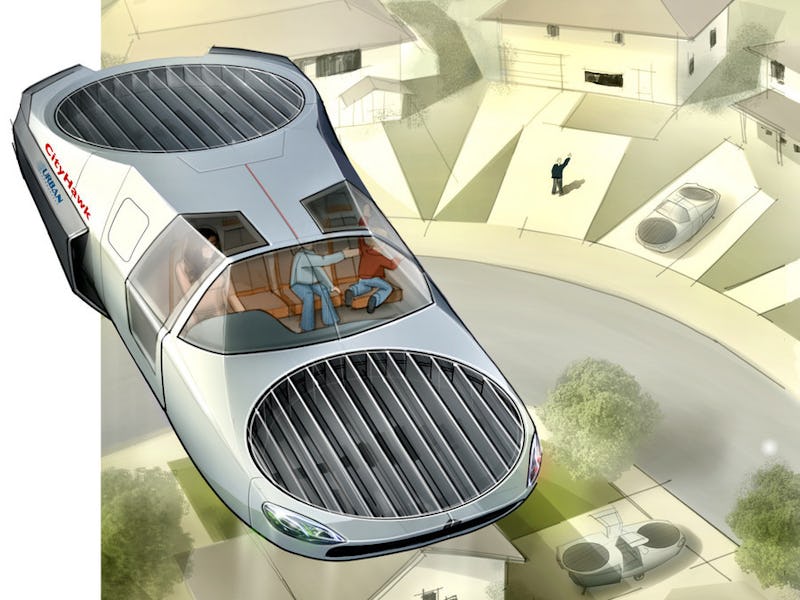Urban Aeronautics’ subsidiary company, Metro Skyways, announced on Monday that it has a new plan to build flying cars powered by highly explosive hydrogen. The company’s new CityHawk vehicle would have no emissions and no batteries to charge, which could mean fewer components to get in the air, as long as researchers can figure out a way to design it safely.
The company has already made a name for itself, thanks to its X-Hawk flying machine tests from last year, and its Cormorant military-focused flying machine that can move up to 1,000 pounds of weight.
The CityHawk is focused on the manned civilian flying car market, taking lessons from the Cormorant’s development and applying them to a more mass market machine. The machine is expected to be a similar shape and size to its predecessor, which weighs 1.5 tons and can move at 115 miles per hour. Where the Cormorant is more for moving military equipment, the CityHawk will seat four people in a car-sized design.
Initial versions will use jet fuel, but Metro Skyways is planning for a liquid hydrogen version, eventually moving to a 700 bar compressed hydrogen system. This eventual system would allow Metro Skyways to cut out fuel cells, cables and motors into an engine directly powered by hydrogen. Although that seems like an accident waiting to happen, the company is confident that its system is safe.
“Hydrogen is increasingly being used by ground vehicles and the delivery infrastructure is steadily growing,” Janina Frankel-Yoeli, vice president of marketing for Urban Aeronautics, tells Inverse. “As long as crashproof fuel tanks are used it is no more dangerous than jet fuel.”
It seems fair enough, but just in case, the company is designing the CityHawk with a rocket-deployed parachute to bring the aircraft down gently in case of an emergency.
Although hydrogen-powered vehicles are currently rare, the fuel has a number of benefits. For starters, its only byproduct is water. There are also signs that it could prove cost-effective: the state of California has over 20 refueling stations, and there are plans to build even more and drive costs down.
Once Metro Skyways gets the funding for its project, it expects development to take around five years. Initial versions will require a human pilot, but as the Cormorant already flies autonomously, the company expects a future version of the CityHawk to also fly passengers autonomously.
Watch the Cormorant, the CityHawk’s predecessor, take a test flight in March:
